In the realm of road safety, the significance of defensive driving techniques cannot be overstated. As responsible drivers, it’s imperative to adopt these practices to minimize accidents and ensure the well-being of all road users. Join us as we delve into the world of defensive driving, exploring its principles, techniques, and the profound impact it has on road safety and insurance costs.
From understanding the importance of defensive driving to implementing practical strategies for hazard recognition and avoidance, this comprehensive guide will equip you with the knowledge and skills to navigate the roads with confidence. By embracing defensive driving, you not only enhance your safety but also contribute to a more harmonious and accident-free driving environment.
Driving Safety
Defensive driving is a set of techniques and behaviors that drivers can use to reduce the risk of accidents and improve road safety. It involves being aware of potential hazards, anticipating the actions of other drivers, and taking steps to avoid collisions.
Defensive driving techniques can help drivers avoid accidents in a variety of situations. For example, a driver who is following too closely may not have enough time to react if the car in front of them suddenly brakes. A driver who is speeding may not be able to stop in time if a pedestrian or animal crosses the road.
A driver who is distracted by their phone or other activities may not see a hazard in time to avoid it.
Real-Life Examples
- A driver who is following too closely rear-ends the car in front of them when it suddenly brakes.
- A driver who is speeding hits a pedestrian who is crossing the road.
- A driver who is distracted by their phone runs a red light and collides with another car.
These are just a few examples of accidents that could have been prevented with defensive driving. By being aware of potential hazards, anticipating the actions of other drivers, and taking steps to avoid collisions, drivers can help to keep themselves and others safe on the road.
Avoiding Distractions
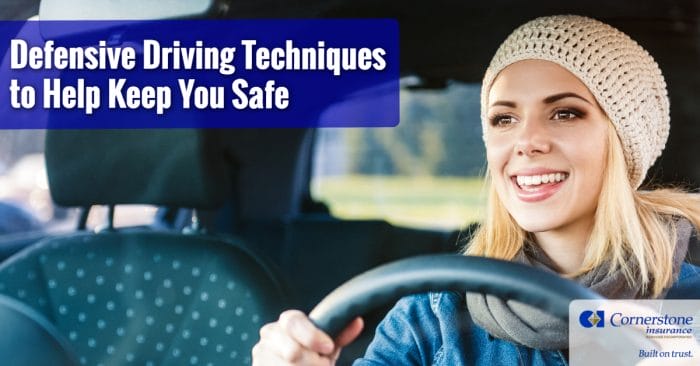
Driving while distracted is a major cause of accidents. It can take your attention away from the road, leading to dangerous situations. Distractions can come from many sources, including cell phones, texting, eating, and even talking to passengers.
Using a cell phone while driving is one of the most dangerous distractions. Talking on a cell phone while driving can slow your reaction time and make it harder to concentrate on the road. Texting while driving is even more dangerous, as it takes your eyes off the road for a longer period of time.
Minimize Distractions
- Put away your cell phone. The best way to avoid cell phone distractions is to put your phone away before you start driving. If you need to use your phone, pull over to a safe place first.
- Avoid eating or drinking while driving. Eating or drinking while driving can take your attention away from the road and make it harder to control your vehicle.
- Be aware of your surroundings. Pay attention to other drivers, pedestrians, and cyclists. Be prepared to react to unexpected situations.
- Avoid talking to passengers. Talking to passengers can be distracting, especially if you are engaged in a heated discussion. If you need to talk to someone, pull over to a safe place first.
Speed Management

Speed is a significant factor contributing to the severity of accidents. The faster you drive, the less time you have to react to hazards, and the more severe the consequences of a collision. Adhering to speed limits and adjusting your speed based on road conditions and traffic volume is crucial for ensuring safety on the road.
Relationship Between Speed and Accident Severity
The relationship between speed and accident severity is well-established. As speed increases, the likelihood of a fatal crash increases exponentially. According to the National Highway Traffic Safety Administration (NHTSA), in 2020, speeding was a factor in 26% of all fatal crashes.
Furthermore, the NHTSA found that the risk of a fatal crash is more than four times higher for drivers who exceed the speed limit by 10 mph or more.
Importance of Adhering to Speed Limits
Speed limits are not arbitrary. They are set based on careful consideration of factors such as road design, traffic volume, and pedestrian activity. By adhering to speed limits, you are helping to ensure the safety of yourself, your passengers, and other road users.
Adjusting Speed Based on Road Conditions and Traffic Volume
Even when the speed limit is high, it may be necessary to adjust your speed based on road conditions and traffic volume. For example, in wet or icy conditions, it is important to slow down to increase your stopping distance.
Similarly, in heavy traffic, it is important to slow down to avoid rear-end collisions.
Following Distance
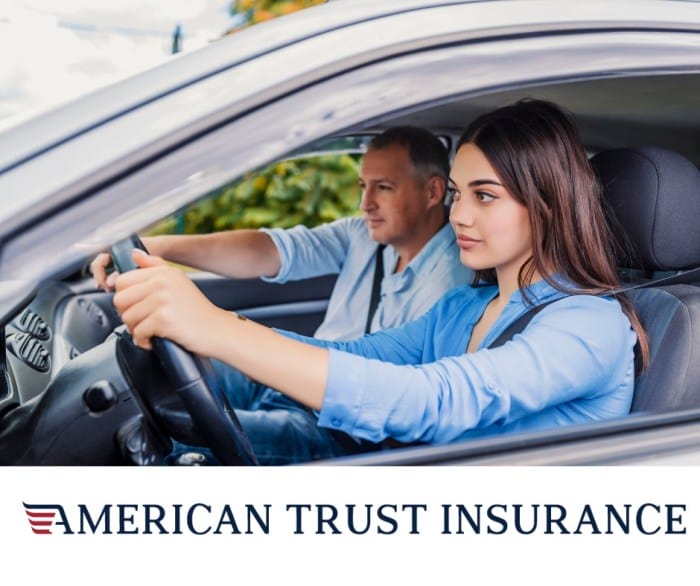
Following distance is the space between your vehicle and the vehicle in front of you. Maintaining a safe following distance is crucial to prevent rear-end collisions and ensure the safety of you and other drivers on the road.
The recommended following distance varies depending on your speed and driving conditions. In general, you should maintain a following distance of at least two seconds in dry weather and good visibility. In wet or icy conditions, or when visibility is poor, you should increase your following distance to at least four seconds.
Tips for Maintaining a Safe Following Distance
- Use the two-second rule: Count the seconds it takes for the vehicle in front of you to pass a fixed object, such as a sign or a tree. If you reach the same object before you finish counting two seconds, you are following too closely.
- Increase your following distance in hazardous conditions: When driving in wet or icy conditions, or when visibility is poor, increase your following distance to at least four seconds. This will give you more time to react to sudden stops or changes in traffic conditions.
- Be aware of the vehicles around you: Pay attention to the vehicles in front of you and behind you. If you see a vehicle approaching quickly from behind, slow down and let them pass.
- Avoid distractions: Avoid using your phone, eating, or engaging in other activities that may distract you while driving. Keep your focus on the road and the vehicles around you.
Lane Discipline
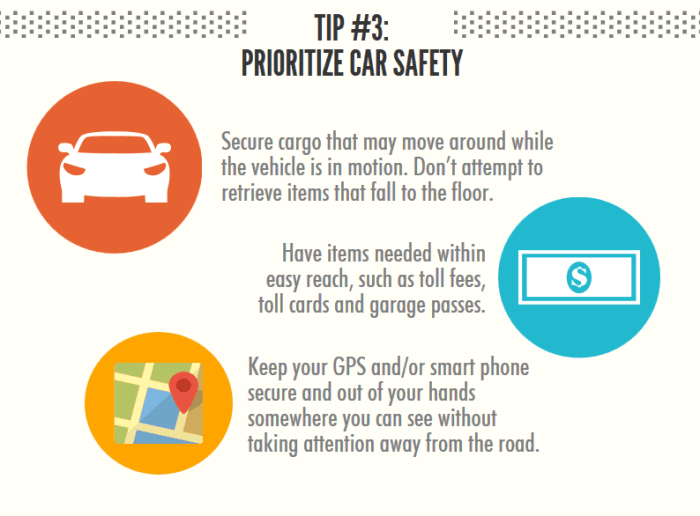
Maintaining proper lane discipline is a crucial aspect of safe driving. It involves staying within designated lanes and refraining from erratic lane changes, ensuring a smooth flow of traffic and minimizing the risk of accidents.
Adhering to lane discipline offers several advantages. Firstly, it promotes traffic efficiency by preventing congestion and gridlock. Secondly, it enhances road safety by reducing the likelihood of collisions, especially those caused by sudden and unexpected lane changes. Thirdly, it fosters a sense of order and predictability on the road, making it easier for drivers to anticipate the movements of other vehicles.
Improper Lane Usage Consequences
- Accidents: Improper lane usage, such as weaving in and out of lanes or failing to signal before changing lanes, can lead to collisions with other vehicles, pedestrians, or cyclists.
- Traffic Congestion: Erratic lane changes can disrupt the flow of traffic, causing congestion and delays for other drivers.
- Road Rage: Improper lane usage can also contribute to road rage incidents, as it can be a source of frustration and anger for other drivers.
Defensive Driving Techniques

Defensive driving is an approach to driving that prioritizes safety and minimizes risks by anticipating and responding effectively to potential hazards. Implementing defensive driving techniques can significantly reduce the likelihood of accidents and enhance overall road safety.
To become a proficient defensive driver, one should master a range of techniques, including scanning the road ahead, using mirrors effectively, and signaling properly. These techniques, when combined, empower drivers to navigate challenging road conditions and interactions with other vehicles.
Scanning the Road Ahead
Scanning the road ahead is a crucial defensive driving technique that involves continuously monitoring the road and its surroundings to identify potential hazards and anticipate changes in traffic conditions. This proactive approach enables drivers to make informed decisions and react promptly to unexpected situations.
- Benefits of Scanning the Road Ahead:
- Early identification of potential hazards, such as stopped vehicles, pedestrians, or road construction.
- Increased awareness of traffic patterns and flow, allowing for timely adjustments in speed and lane position.
- Enhanced ability to anticipate the actions of other drivers, reducing the risk of accidents.
Using Mirrors Effectively
Effective use of mirrors is essential for maintaining situational awareness and avoiding blind spots. Regularly checking mirrors provides drivers with a comprehensive view of their surroundings and helps them make safe and informed decisions.
- Benefits of Using Mirrors Effectively:
- Elimination of blind spots, ensuring drivers are aware of vehicles and objects in their vicinity.
- Enhanced ability to change lanes safely by checking for approaching vehicles and maintaining a safe following distance.
- Improved communication with other drivers through the use of turn signals and hand signals.
Signaling Properly
Proper signaling is a fundamental defensive driving technique that communicates intentions to other drivers and pedestrians, promoting safety and reducing the risk of accidents. Clear and timely signals facilitate smooth traffic flow and prevent misunderstandings.
- Benefits of Signaling Properly:
- Improved communication with other road users, reducing the likelihood of collisions and near-misses.
- Enhanced predictability of driving behavior, enabling other drivers to anticipate and react accordingly.
- Increased safety for pedestrians and cyclists, as they can anticipate the movements of vehicles.
Inclement Weather Driving
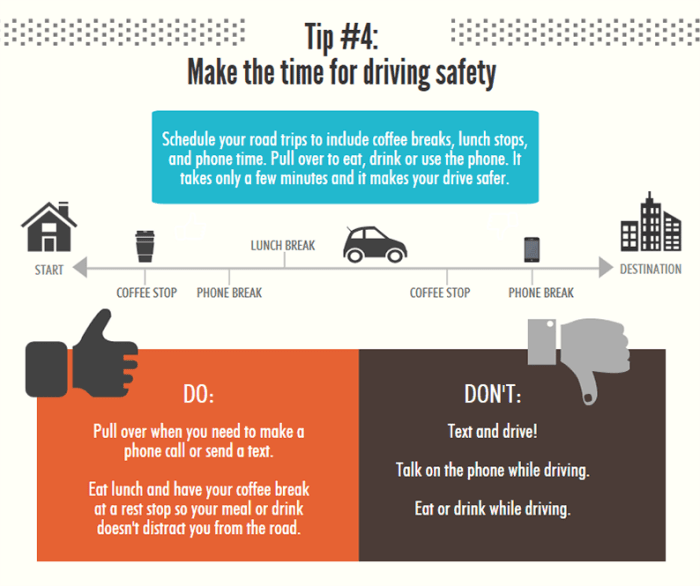
Inclement weather conditions, such as rain, snow, and fog, pose significant challenges to drivers. It is crucial to adjust driving behavior and vehicle handling in adverse weather to ensure safety and minimize the risk of accidents.
Rain
Rain can reduce visibility and cause slippery road conditions.
- Slow Down: Reduce speed to allow more time for braking and maneuvering.
- Increase Following Distance: Maintain a greater following distance from the vehicle ahead to provide more reaction time.
- Use Wipers: Keep windshield wipers in good condition and use them frequently to maintain visibility.
- Avoid Hydroplaning: Be aware of the risk of hydroplaning, especially in standing water. Slow down and avoid sudden steering movements if you feel the vehicle losing traction.
Snow
Snow can make roads slippery and reduce visibility even further.
- Use Winter tires: Winter tires provide better traction in snow and ice. Consider installing them when temperatures drop below 7°C (45°F).
- Start Slowly: Accelerate and brake gradually to avoid skids.
- Use Low Gears: Use lower gears to help maintain traction.
- Be Prepared for Black Ice: Black ice is a thin layer of ice that is difficult to see. Be especially cautious on bridges, overpasses, and shaded areas.
Fog
Fog can significantly reduce visibility, making it difficult to see other vehicles and road hazards.
- Slow Down: Reduce speed to allow more time to react to hazards.
- Use Fog Lights: Use fog lights to improve visibility, but be mindful not to blind oncoming drivers.
- Follow Road Markings: Stay within your lane and follow road markings to guide your driving.
- Be Prepared for Sudden Stops: Be prepared for vehicles ahead to stop suddenly due to poor visibility.
Sharing the Road with Others
Developing a mindset of courtesy and respect on the road creates a harmonious and safe environment for everyone. Acknowledging that we share the road with other drivers, pedestrians, and cyclists, we must practice patience and understanding.
Aggressive Driving and Road Rage
Aggressive driving and road rage can lead to dangerous situations and conflicts. Aggressive driving behaviors include speeding, tailgating, weaving in and out of traffic, and running red lights. Road rage is an extreme form of aggressive driving that can involve verbal or physical altercations.
These behaviors not only endanger the driver’s life but also put others at risk.
Examples of aggressive driving include:
- Speeding: Driving at speeds that exceed the posted limit or are unsafe for the conditions.
- Tailgating: Following too closely behind another vehicle, leaving insufficient space for safe maneuvering.
- Weaving in and out of traffic: Abruptly changing lanes without signaling or allowing sufficient space for other vehicles.
- Running red lights: Disregarding traffic signals and proceeding through intersections without stopping.
Examples of road rage include:
- Verbal abuse: Shouting, swearing, or making obscene gestures at other drivers.
- Physical altercations: Intentionally hitting or bumping another vehicle, or getting out of the car to confront another driver.
- Dangerous driving: Intentionally swerving in front of another vehicle, brake-checking, or forcing another driver off the road.
These behaviors can have severe consequences, including accidents, injuries, and even fatalities. Additionally, aggressive driving and road rage can lead to traffic citations, increased insurance premiums, and even jail time.
Defensive Driving Training
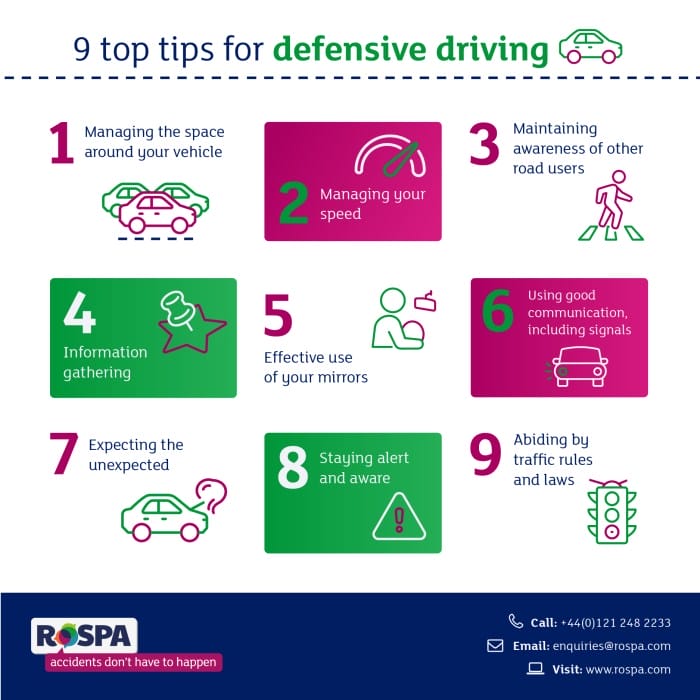
Defensive driving training is an invaluable tool for improving your driving skills, enhancing road safety, and reducing the risk of accidents. It teaches techniques and strategies that enable drivers to anticipate and avoid potential hazards, and react appropriately to unexpected situations.
By participating in defensive driving courses, you can become a more confident and competent driver, potentially saving lives and preventing property damage.
Benefits of Defensive Driving Training
Defensive driving training offers numerous benefits to participants, including:
- Improved driving skills: Courses provide hands-on experience and instruction on essential driving techniques, such as hazard recognition, evasive maneuvers, and proper braking methods.
- Enhanced road safety: Defensive driving techniques help drivers identify and mitigate potential hazards, reducing the likelihood of accidents and collisions.
- Reduced risk of traffic violations: By learning and practicing safe driving habits, drivers can minimize the chances of receiving traffic tickets and fines.
- Lower insurance premiums: Some insurance companies offer discounts to drivers who have completed defensive driving courses, recognizing the reduced risk associated with their driving.
- Increased confidence: Defensive driving training instills confidence in drivers, empowering them to navigate challenging road conditions and handle unexpected situations with greater ease.
Finding Reputable Defensive Driving Training Programs
To ensure you receive high-quality defensive driving training, consider the following factors when selecting a program:
- Accreditation: Look for programs accredited by reputable organizations, such as the National Safety Council (NSC) or the American Automobile Association (AAA).
- Experienced instructors: Choose programs with experienced and certified instructors who have a proven track record of providing effective training.
- Comprehensive curriculum: Ensure the program covers a wide range of defensive driving topics, including hazard recognition, risk assessment, and accident avoidance techniques.
- Hands-on training: Opt for programs that offer hands-on training and practice sessions, allowing you to apply the techniques you learn in a controlled environment.
- Convenient scheduling: Consider programs that offer flexible scheduling options to accommodate your busy lifestyle.
Conclusion

In conclusion, defensive driving is a proactive approach to road safety that empowers drivers to anticipate and respond effectively to potential hazards. By incorporating these techniques into your driving habits, you not only protect yourself and others but also contribute to a safer and more enjoyable driving experience.
Remember, defensive driving is not just about following rules; it’s about being aware, alert, and courteous on the road. As responsible drivers, let’s embrace defensive driving and work together to create a safer and more harmonious driving environment for all.
Helpful Answers
How does defensive driving reduce insurance costs?
Insurance companies often offer discounts to drivers who complete defensive driving courses. This is because defensive driving techniques help reduce accidents and claims, resulting in lower insurance costs for the company and policyholders.
What are some common defensive driving techniques?
Defensive driving techniques include maintaining a safe following distance, avoiding distractions, using mirrors effectively, signaling properly, and being aware of potential hazards. By practicing these techniques, drivers can significantly reduce their risk of accidents.
How can I find reputable defensive driving training programs?
Reputable defensive driving training programs can be found through local driving schools, community colleges, and online platforms. It’s important to choose a program that is approved by your state or insurance company to ensure that it meets the required standards.



